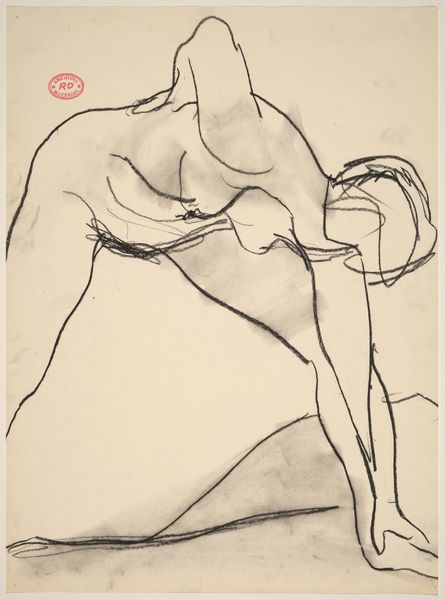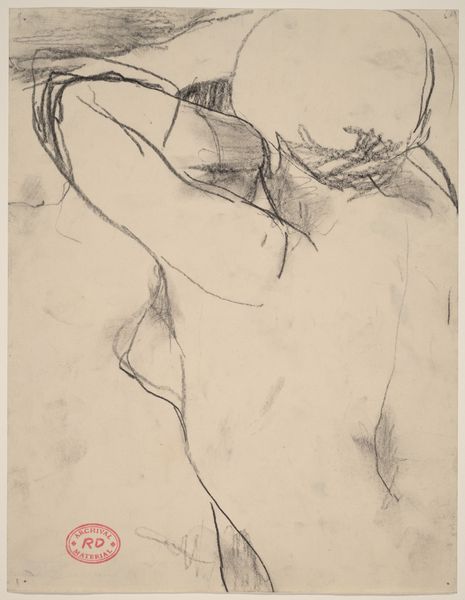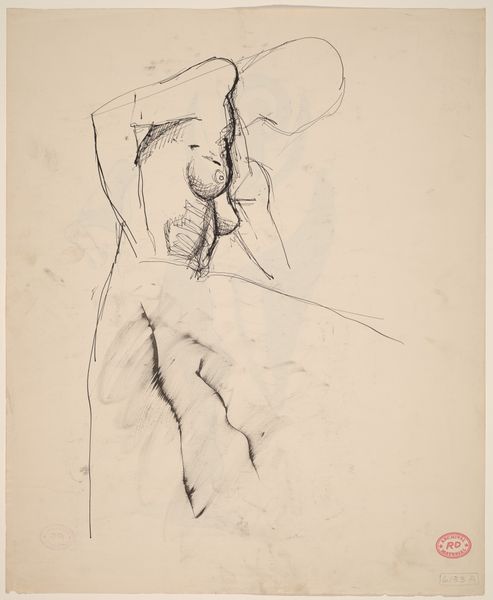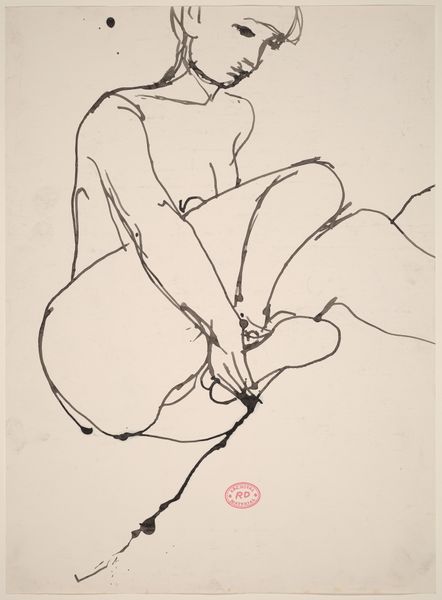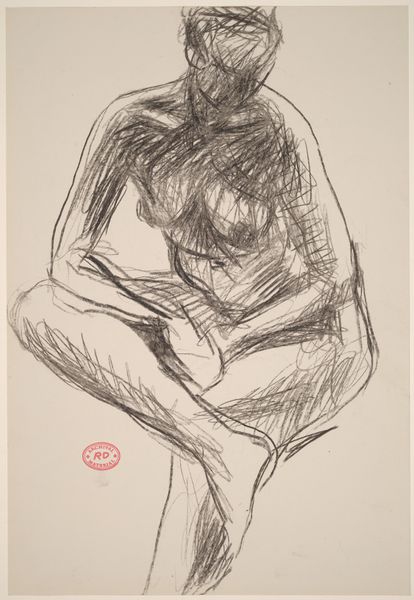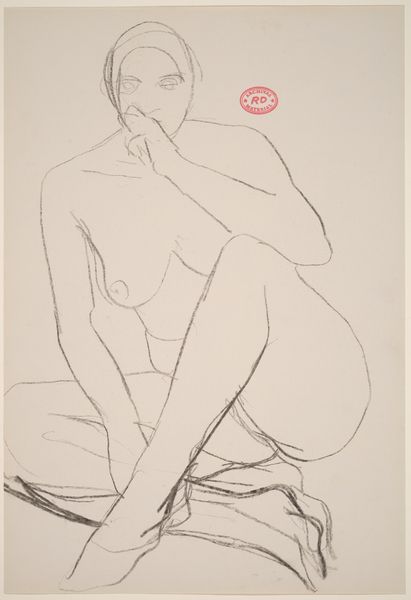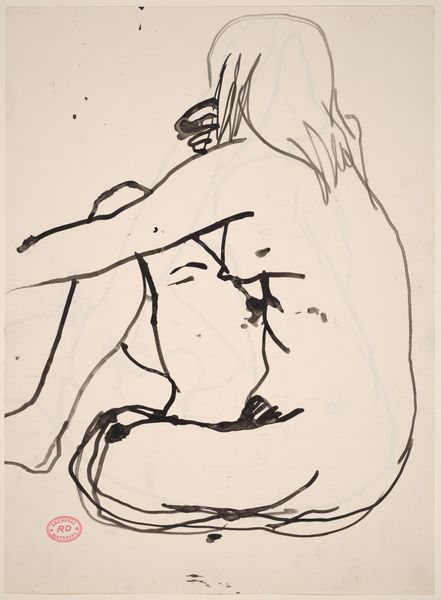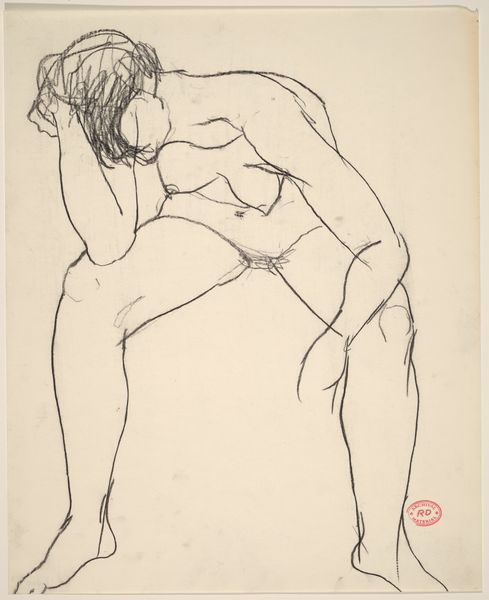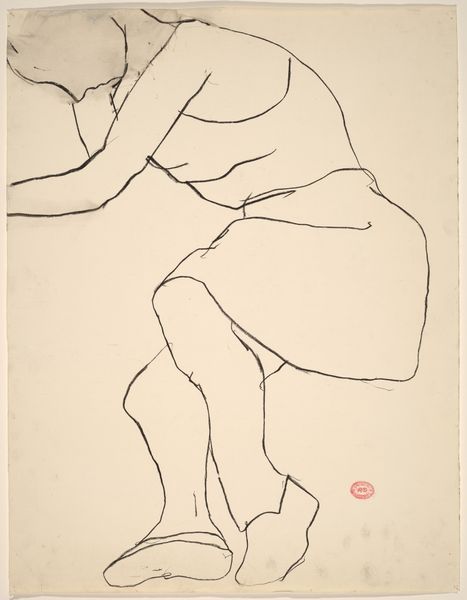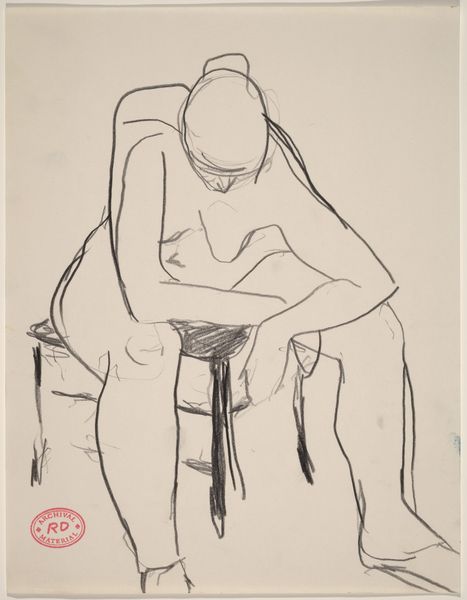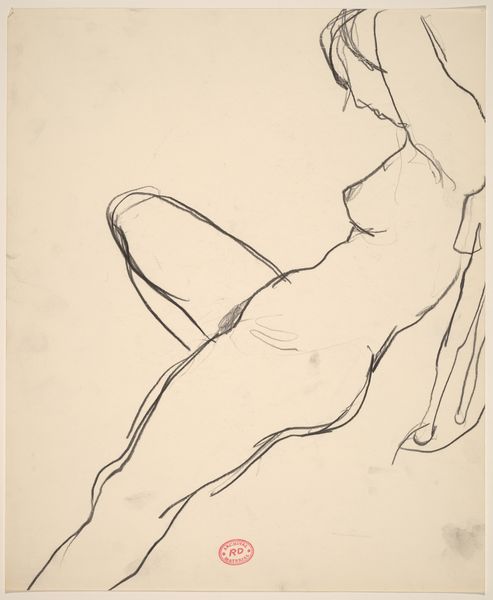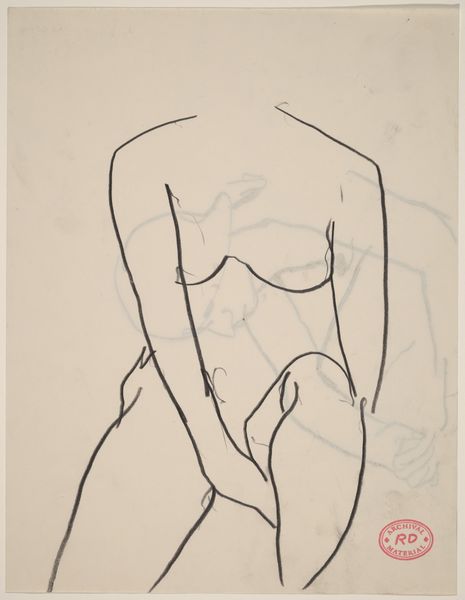![Untitled [crouching nude] [verso] by Richard Diebenkorn](/_next/image?url=https%3A%2F%2Fd2w8kbdekdi1gv.cloudfront.net%2FeyJidWNrZXQiOiAiYXJ0ZXJhLWltYWdlcy1idWNrZXQiLCAia2V5IjogImFydHdvcmtzLzFjMWRkNWJiLWU1ZDMtNGRlOS1hMjZlLTYzYTFmNDRjMTIxZC8xYzFkZDViYi1lNWQzLTRkZTktYTI2ZS02M2ExZjQ0YzEyMWRfZnVsbC5qcGciLCAiZWRpdHMiOiB7InJlc2l6ZSI6IHsid2lkdGgiOiAxOTIwLCAiaGVpZ2h0IjogMTkyMCwgImZpdCI6ICJpbnNpZGUifX19&w=3840&q=75)
drawing, graphite, charcoal
#
abstract-expressionism
#
drawing
#
figuration
#
bay-area-figurative-movement
#
ashcan-school
#
graphite
#
charcoal
#
nude
Dimensions: sheet: 43.3 x 35.4 cm (17 1/16 x 13 15/16 in.)
Copyright: National Gallery of Art: CC0 1.0
Curator: Let's discuss this untitled nude drawing, believed to have been created by Richard Diebenkorn sometime between 1955 and 1967. Editor: Stark. I'm immediately struck by the economy of line, just enough to suggest form. Almost a diagram of a body, wouldn’t you say? The visible marks and smudges tell of the artist’s hand at work. Curator: Diebenkorn was moving away from pure Abstract Expressionism during this period, searching for a way to incorporate figuration. These nude drawings were part of that process. They reflect the broader postwar reassessment of the figure in art and culture. How to represent the body after everything that had happened? Editor: Exactly! You can almost feel the artist grappling with it. The rawness of the charcoal or graphite, that quick, searching line—it feels honest about the act of observation, the labor of translating three dimensions onto a flat surface. Not prettified at all. Curator: The Ashcan School influence is detectable, I think. These unidealized nudes were responding to a democratization of the image in American art. Who got represented, how they got represented—Diebenkorn’s sketches participated in that dialogue. Editor: I appreciate that anti-perfection stance, almost. Look how the paper’s texture shows through; it isn't concealed, but fully integrated as part of the piece. You realize this was produced not just through skill but hard work—repeated studies and sketches. It becomes about the making, about the inherent beauty within its making. Curator: And it is important to remember Diebenkorn was grappling with some social and art-world anxieties when this work was done. It's a return to basic human form that also carries a statement about authenticity, away from what would later be seen as the excesses of Abstract Expressionism, and certainly pop art. Editor: Thinking about his process definitely adds another layer to how one reads it. What a fascinating artifact of its time. Curator: Indeed, there's something very revealing in this seeming simplicity, in that intersection of line, body, and context.
Comments
No comments
Be the first to comment and join the conversation on the ultimate creative platform.
